What's Wrong With This Picture? Antique Auto Advertising Edition

While researching the topic of the “blackout” cars of 1942, that had painted rather than plated trim due to wartime restrictions on strategic metals, I came across this promotional postcard for the 1942 DeSoto, the second American production car to feature hidden headlights, advertised as “airfoil lights” . “Boy,” I thought, “Now that’s a sleek, streamlined car, I’m surprised I don’t remember it,” well until I saw a photograph of an actual ’42 DeSoto.
Not quite the same, is it? While the hidden headlights, the grille treatment and lack of running boards are modern for their day, the real “rocket body” is rather stodgy, certainly not nearly as sleek as the car on the postcard.
We live in an era where every contour in a production car that deviates from its concept show car is noted and discussed. I can’t help but wonder how many potential DeSoto customers were disappointed to see that there was some bait and switch going on with the new 1942 De Soto, as advertised. So far, I’ve only found a couple of instances where DeSoto used an actual photograph or a properly scaled drawing in advertising for the ’42. Almost all of the period advertising uses some variation of the drawing above. All of the drawings make the car look lower, wider, and sleeker than it actually was. The one photo illustrated ad uses an elevated front 3/4 beauty shot, a perspective that makes the roofline look much lower. The one ad that uses a properly scaled drawing emphasizes the stolid reliability and safety of DeSotos with “7 out of 10… still running”. I can understand why they didn’t use the racier streamlined drawings for that particular advertisement.
For the rest of the car’s marketing, it’s pretty obvious why DeSoto’s marketers went with the drawings. It’s a much better looking car. I think I know where they got the idea for those drawings too. That lower, sleeker look is reminiscent of how car designers do a preliminary sketch of a car, exaggerating for effect. Perhaps consumers 70 years ago were more tolerant of such exaggerations in advertising.
DeSoto Cyclone concept by Alex Tremulis
The drawing in the ad could have originated with sketches at the Briggs body company’s design studio, where Alex Trumulis and Ralph Roberts worked on the Chrysler’s first concept cars, the Newport and Thunderbolt. Chrysler was a bit slower than the other two big Detroit car companies to style cars in-house, relying mostly on the designers at Briggs instead. Like the ’42 DeSoto, the Thunderbolt sports cars and at least one of the dual cowl Newport parade cars had hidden headlights.
If you look at Tremulis’ stillborn DeSoto Cyclone concept car, which was supposed to be Chrysler’s third concept car before World War Two intruded, I don’t think it’s much of a stretch to say that Tremulis probably had a role in the design of the 1942 DeSoto. The design patent for the ’42 DeSoto’s front end was granted to Robert Cadwallader, Chrysler’s head stylist, but it’s not unusual for styling executives to put their name on others’ work. Harley Earl’s name is all over GM design patents for designs rendered mostly by designers who worked for him.
There’s also a bit of similarity between the drawing style in the DeSoto ads and Tremulis’ Cyclone sketch. I doubt that Tremulis drew the actual images used in the ads, but again, I don’t think it’s much of a stretch to say that the ads were influenced by design studio drawings of the car.
In some ways I’m reminded of another Chrysler concept car, by Pininfarina. You may have heard of the so-called Exner-Ghia concepts, idea and show cars that were primarily designed by Virgil Exner Sr’s staff at Chrysler in Detroit and then built in Italy by the coachbuilding craftsmen at Ghia. Before Chrysler picked Ghia they had a competition between that shop and the one of Pinin Farina. Ironically, Pininfarina more or less followed the supplied drawings while Ghia did their own thing, producing the Plymouth XX-500, which looked nothing like a late ’40s Plymouth. Ghis still got the deal because of their outstanding metal work, finishing details, and incredibly cheap by Detroit standards pricing.
The drawings used in the DeSoto ads remind me a little of the original drawing on which Pininfarina’s Plymouth concept was based (well, that and Van Dyke Parks’ work for Little Feat). That car’s been lost to history and it’s nearly as well known as the XX-500. The Peninfarina Plymouth was one of those obscure idea cars that Detroit forgets, but David Fetherston and Tony Thacker were able to track down a concept drawing and a photograph of the finished car for their book on Chrysler concepts.
As you can see, the finished Pininfarina Plymouth had a low, sleek roofline, not as low or as sleek as the ’42 Desoto drawing or as on Tremulis’ Cyclone, but hardly as upright as the production DeSoto (am I alone in seeing some Porsche Panameralike lines from the A pillar back?). As drawn, the 1942 DeSoto was a great looking car, as built, not so much. To be honest, I think it’d be a cool idea for someone like Troy Trepanier or Murray Pfaff to take a ’42 DeSoto and turn it into a real version of the drawings used in advertising that car.
Ronnie Schreiber edits Cars In Depth, a realistic perspective on cars & car culture and the original 3D car site. If you found this post worthwhile, you can dig deeper at Cars In Depth. If the 3D thing freaks you out, don’t worry, all the photo and video players in use at the site have mono options. Thanks – RJS

Ronnie Schreiber edits Cars In Depth, the original 3D car site.
More by Ronnie Schreiber
Latest Car Reviews
Read moreLatest Product Reviews
Read moreRecent Comments
- Calrson Fan Jeff - Agree with what you said. I think currently an EV pick-up could work in a commercial/fleet application. As someone on this site stated, w/current tech. battery vehicles just do not scale well. EBFlex - No one wanted to hate the Cyber Truck more than me but I can't ignore all the new technology and innovative thinking that went into it. There is a lot I like about it. GM, Ford & Ram should incorporate some it's design cues into their ICE trucks.
- Michael S6 Very confusing if the move is permanent or temporary.
- Jrhurren Worked in Detroit 18 years, live 20 minutes away. Ren Cen is a gem, but a very terrible design inside. I’m surprised GM stuck it out as long as they did there.
- Carson D I thought that this was going to be a comparison of BFGoodrich's different truck tires.
- Tassos Jong-iL North Korea is saving pokemon cards and amibos to buy GM in 10 years, we hope.




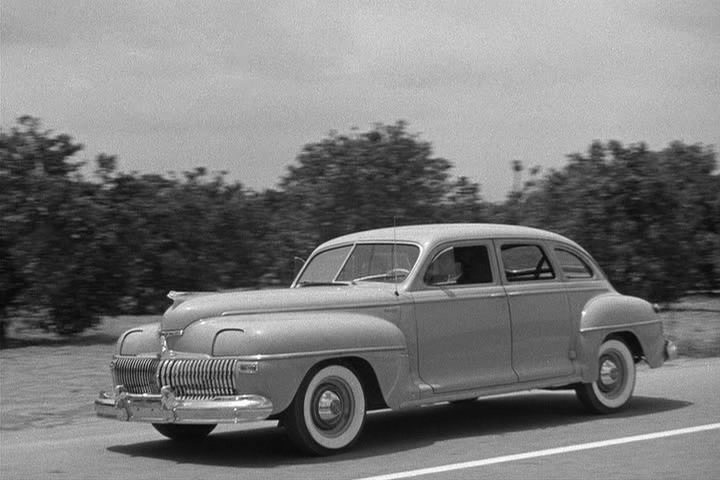












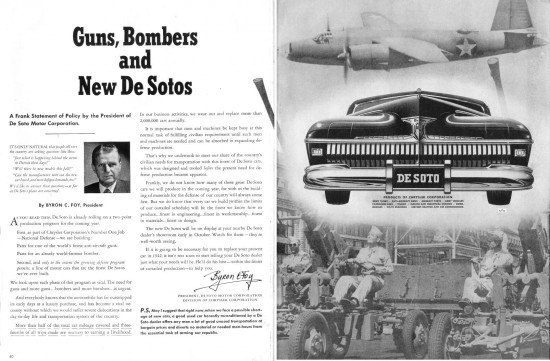































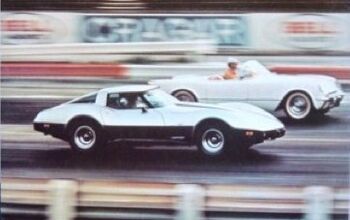
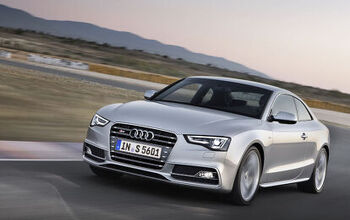
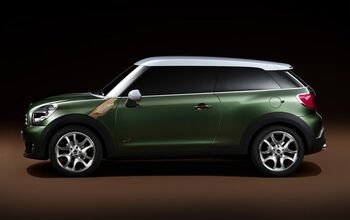
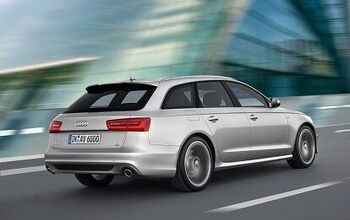










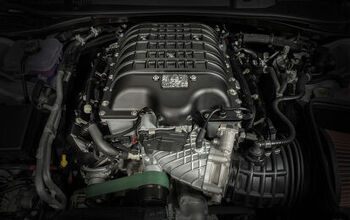
Comments
Join the conversation
Nice piece! Thanks. It seems the stylized images were the norm in the day. Find your favorite old car here: http://www.lov2xlr8.no/broch1.html
A couple of comments by an owner of a 1942 DeSoto Fifth Avenue 4dr Sedan. The headlights are controlled by a set of rods operated by a handle under the dashboard that one turns and pushes in to rotate them open and turn on the lights. Although DeSoto Division made efforts to convince prospective buyers that there was no problem (lots of pre-release testing) I've spoken to old car guys who said the cars tended to ice up either open or closed! Advertising - look at almost all the contemporary ads for 1942 cars before December 1941 and this style is predominate. Interestingly in 1941 DeSoto provided dealers with a catalog for the 1941 DeSotos that used actual color photographs. During WWII DeSoto Division did run black and white ads that were mostly of Chrysler war material but there were a couple that used actual photos of a 42 sedan. There was interestingly enough one advertisement that ran in a January 1942 edition of Collier's that was of a "Black Out" sedan. It appears to be by the same artist that did the ads and the postcards shown. Its my opinion that the äirfoil headlights "out of sight except at night" come from the Cord via the 41 Thunderbolt and Newport concept cars. Also of interest is that Chrysler De Soto Export division advertised for sale two different models. One was the same as the 1942 domestic DeSoto - either right or left hand drive and the other was a Plymouth body with the waterfall grille but no hidden headlights!